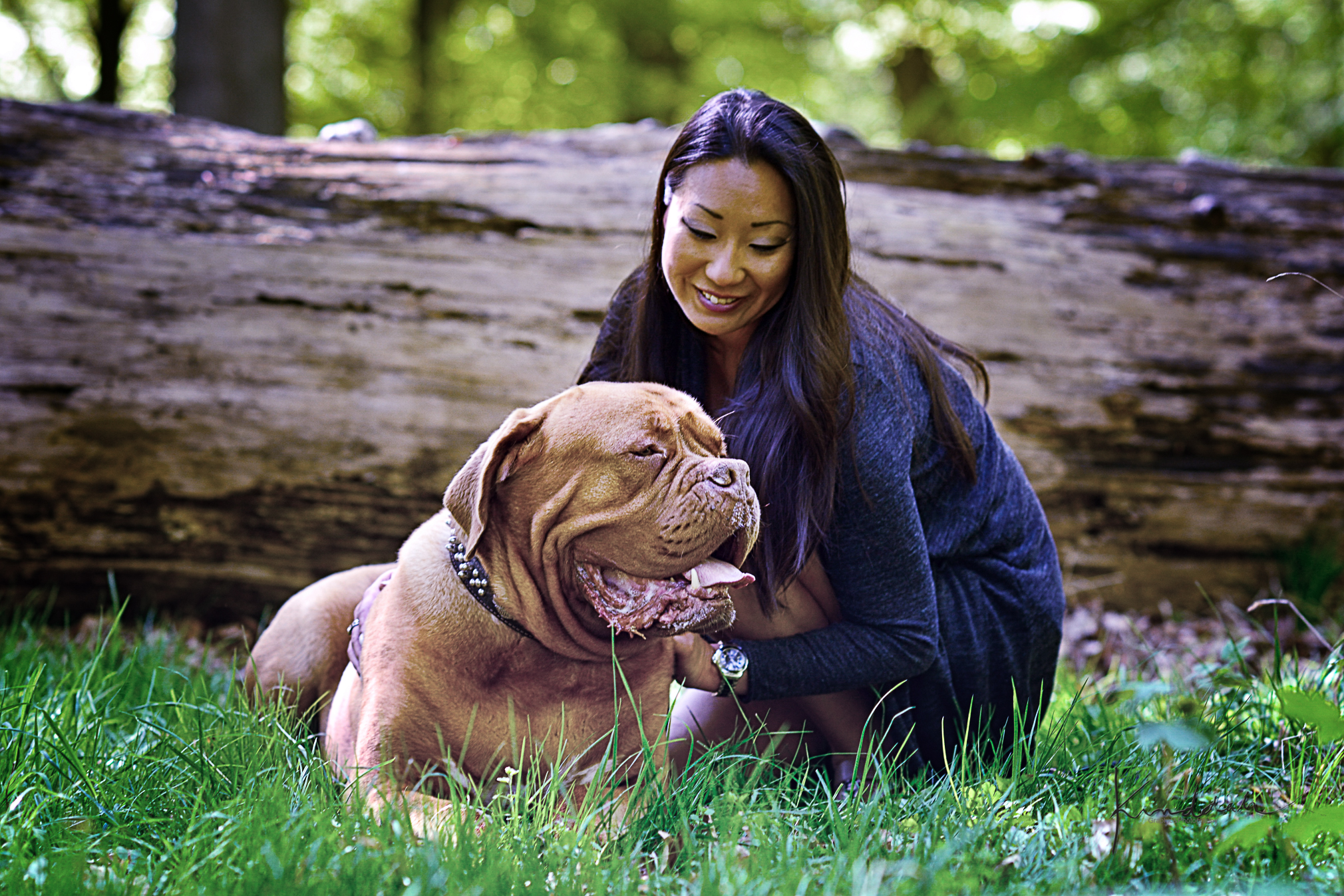Why Is My Dog Limping?
4 Causes Of Lameness In Dogs
by Ditte Young
Many dog owners and pet parents don’t notice when their dog is limping if it is a matter of sudden onset limps. It is more obvious to “read” your pet’s condition if we have an injured dog or see a sudden limping dog.
So, why is my dog limping? As a dog owner, you can try your best to see if your dog carries its weight equally on all four paws. If you feel a dog is limping, seek veterinary care or contact an animal hospital.

Table of Contents
Why Is My Dog Limping?
There can be several explanations for dog’s limping but here are the 4 most common reasons:



Paw Injury
Some dogs are more sensitive than others, as we humans can’t be equally sensitive to our sensory profiles and physical bodies.
Dogs have individual personality profiles. When I screen dogs for physical examinations, I look for the personality profile to find how each dog experiences the level.
After screening the dog’s limping, I refer it to a veterinarian or an animal hospital.
You might also be interested in reading: How to stop a dog from peeing in the house and how to stop a dog from humping?
Here are a few categories that explain paw injuries and make the dog’s limp are:
- Sensitivity on the paws which makes the dog react to hot concrete and feels burnt sand, and ice which creates frostbites or, rain which can give your dog what looks like a sudden limping because it is cautious on walks, etc.
- A piece of glass in the paw
- Foreign bodies
- Sticks
- Thorns
- Plants or an allergic reaction
- Animal stings
- Paw insect bite
- Broken toenails
Degenerative Joint Disease
Another cause when you see limping in dogs can be if the dog has a joint disease. The dog owner should see a gradual onset of limping to begin with.
A veterinarian can diagnose the joint diseases and might be diseases such as:
- Osteoarthritis
- Hip Dysplasia
- Lyme Disease
Don’t worry; many dogs inherit joint diseases depending on the breed. The veterinarian can help you to find an accurate diagnosis and help your dog by giving you a prescribed treatment plan.
Broken Bone
The symptoms of a broken bone will be severe leg pain. The pain is often so severe that the dog will not let you touch its leg. You will also see a painful stuck and broken limb or severe limping with the dog.
If your dog is unlucky to break a bone, most uncomplicated broken bone injuries heal within 3-4 weeks. The dog must be calm for the bone to heal correctly.
It is difficult for a dog to lie down all day, and it’s against their nature, but this will significantly help your dog. Giving your dog rest will also prevent your dog from having another medical history to begin if the broken bones don’t heal correctly.
Too much movement can make the broken bone unstable and cause deficient growth. That can create a bad functioning leg, or the dog can experience pain under activity. Some dogs get a bandage on the broken bone or a cast on the fractured area.
Additional reading: Why is my dog whining and why is my dog shaking?
Trauma
Some dogs experience traumas even though nothing is broken, or in case of a car accident, they survived – luckily. The dog’s serious health concern is not just a matter of healthy food, exercise, or giving it physical therapy or massage. The dog has a nervous system as we have as human beings too.
The dog can be traumatized as we can. The dog’s pain can be a matter of what’s going on, on the inside as well as what happens on the outside for the dog. If a dog experiences a situation that seems dangerous to him or her, the nervous system remembers.
Think of the many dogs who get insecure in meeting with other dogs. That could be a dog who once was attacked as a puppy by a black dog, and in the future, this dog will have a severe defense mechanism in meeting with black dogs.
The dog’s limp can be a compensation injury too. If the dog doesn’t carry its weight equally or diagonally for various reasons, it quickly gets locked in joints, muscles, or bones, creating onset limps that the dog owner might not notice. This can be healed with help from a healer, animal communicator, dog whisperer, cranial sacral therapist, or dog therapist.
To train equality in the body, I recommend you remember to change which side you hold the leash on your dog to help your dog from looking on the same side when it seeks your attention or acknowledgment.
Other traumas can be:
- Fractures
- Sprains
- Dislocations
- Ligament problems
- Joint trauma
- Spinal injuries

Can A Dog Recover From Lameness?
Not all dogs experience pain combined with lameness. Some dogs get lame after an injury. When a dog is lame, it can’t move and will lie down flat.
With partial lameness, the dog can drag its own body across the floor, or you will see a dangling limb with the dog. Some dog owners tend to mistake a weak lower back for lameness.
Weaknesses in the back are often caused by the following:
- Female dogs with uterine inflammation
- Fever
- A severe infection
The typical reasons for lameness can be:
- Nerve damages after an accident in traffic
- Prolapse
- Infections
- Tumor in the nervous system (brain, spine, or other nerves in the body)
- Muscle damage
- Blood clots (where you can see severe swelling limbs)
- Poisoning
Depending on the cause of the lameness, it is possible to cure lameness. The treatment will be surgical treatment, conservative treatment, or medical treatment.
Gradual Onset
Gradual onset limps occur once in a while and happen slowly over time. This type of limp is often caused by an underlying, chronic, or degenerative condition such as dysplasia. Or if the dog continuously locks parts of the body because it can’t walk straight, which will affect the dog’s entire body over time.
Sudden Limping
If your dog suddenly starts limping, it is typically caused by an injury or trauma. The pain can be experienced differently from one dog to another, but most dogs can usually wait a few hours before you need to get a vet appointment. You can physically examine your dog yourself, to begin with, and look at the affected leg.
You can help your dog with:
- Heat and ice packs if swollen or sore
- Look for foreign objects stuck in the dog's paw
- Do tick testing to avoid Lyme disease or blood infections
How Can I Help My Limping Dog?
You can help your dog relieve pain when you react to the limping. Don’t hesitate or wait too long. When your dog starts to show you onset limping, it might have the problem for months before you see it.
Veterinary Care
Veterinarians are the only persons who can prescribe medicine to your dog and measure the correct dose. You can also discuss diet and exercise plans and get an x-ray.
Physical Care
You can provide physical care to help prevent future damages or injuries and focus on joint health and mentally healthy by:
- Exercise your dog accordingly to its age and weight
- Provide massage, cranial sacral therapy, acupuncture, osteopathy, or physiotherapy
- Use a spa or water walker to straighten your dog on the topline
- Make sure to serve high-quality food to your dog.
Animal Telepathy Mastery
If you want to learn behavior techniques to calm down dogs, and if you want to learn from the most recognized animal communicator and dog whisperer in Europe, now here is your chance.
You can now participate in Animal Telepathy Mastery from anywhere in the world.
This is for you who:
- Want to give your dog the best life possible?
- Have a dog who’s insecure
- Want to know how dogs are engaging
- Wants tools for behavior modification
- Want to be acquainted with the particular types of dog personalities
- Have a rescue dog with traumas
- Want to make a living by helping animals
- And so much more…
If you find the article “Why is my dog limping” relevant, please share it on social media below.

Ditte Young
Want to learn telepathy with animals?


